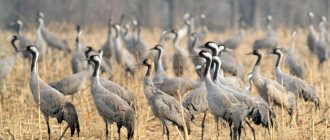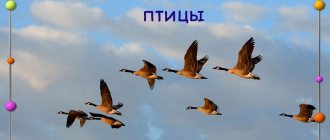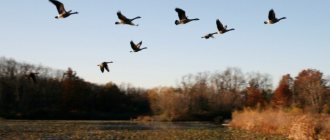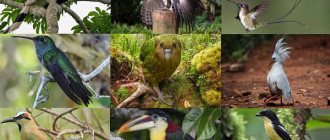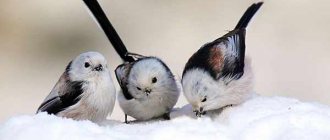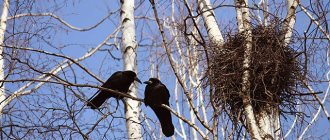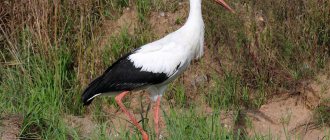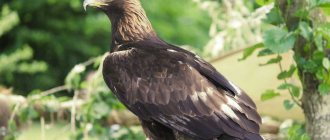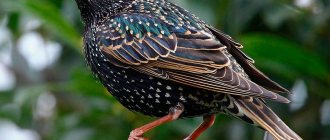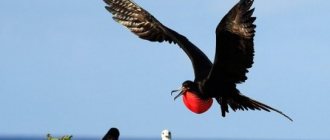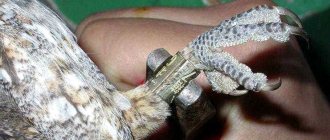Which birds are the last to fly south in autumn? What birds fly away in autumn?
In the fall, insectivorous bird species, such as the wagtail, fly away first.
While it remains possible to find seeds or fruits, granivores are still in place. But as soon as the snow falls, or rather when the grains are hidden under a layer of snow, siskins, buntings and finches fly away. And many people probably know which birds are the last to fly away in the fall. Waterfowl ducks and geese begin to leave their homes when rivers and ponds begin to be frozen by ice floes. In addition, some bird species, both wintering and migratory, leave their habitats depending on weather conditions. In cases where the year turned out to be fruitful, and there was little snow, bullfinch, redpoll, waxwing, and butternut may remain for the winter. But if the feeding situation is unfavorable, they begin to join the birds that are about to fly south.
Birds are also divided into migratory and wintering, depending on the area of residence of these individuals. For example, in the northern regions, even crows and rooks begin to fly away towards the south, while their southern counterparts remain in place during this period. Blackbirds from Central Russia fly away for the winter, but in Western Europe they do not leave their habitats.
Summer
Bird life in summer
The main task of each species of birds for the summer is feeding and adapting the chicks to life. If the summer turns out to be rainy and cool, then the life of birds becomes somewhat more difficult. Chicks die from colds and hunger. And the parents themselves are in great danger while it rains.
Drought is also not a favorable state of nature for birds. For birds living in swamps, drought is a disaster. During such periods, wading birds are forced to go out in search of a new habitat. And if the hot days drag on, the vegetation begins to dry out. This situation is dangerous for all types of birds.
The main task of birds for the summer is to teach their chicks to fly, so that in the fall they can fly south with their parents.
As a rule, summer days are accompanied by early dawn and late sunset, so the days of many birds become longer. So, for example, chickadees, they wake up with the first rays of the sun and fall asleep at sunset.
And the songs of the redstart can be heard at any time of the day, because they wake up before sunrise and fall asleep at dusk.
In the summer, birds are especially active and lead their usual lifestyle. Day and night predators hunt in forests and steppes. The familiar inhabitants of crowded places fly along the streets of cities and villages.
What birds fly away from us to warmer lands. Which birds fly south first?
With the onset of cold weather, some species of birds fly away from Russia to warmer places.
Birds are warm-blooded animals, with a body temperature of 41 degrees, but what then makes them fly south for the winter? According to statistics, more than 60 species of birds live on Russian territory, most of which migrate seasonally to southern countries. To recognize which birds are migratory, you need to pay attention to what they eat. In conditions of food shortage, birds tend to find food in other territories. There are insectivorous, granivorous and carnivorous birds. Insectivorous winged birds fly away first, because with the onset of cold weather, insects either hide or disappear. The lack of food forces birds to fly to other countries for it, where insects are present all year round and the temperature is warm.
Birds living in the tundra or taiga almost all fly to where the climate is warmer. Among other migratory species of birds, ornithologists distinguish:
- finches;
- robins;
- rooks;
- jackdaw;
- garden warblers;
- kingfishers;
- lapwings;
- orioles;
- flycatchers;
- lark;
- cuckoos;
- swans;
- starlings;
- blackbirds;
- Solovyov and others.
Insectivores, carnivores and granivores
A striking example of this is the swallow, which feeds on cockchafers and dragonflies. Swallows prefer to find their food on the Mediterranean coast. Carnivorous migratory birds include herons, which feed on fish and frogs. In winter, lakes and rivers freeze, making it impossible for these birds to feed.
Granivorous birds also suffer, as it is difficult for them to find seeds and herbs in the middle of the snow. Popular herbivorous birds are cranes, which prefer to prepare for departure in early autumn. When gathering in flocks, heat-loving cranes notify people of their departure with a guttural cry. However, not all cranes leave their native lands, but only those who live in the northern regions of Russia.
Which birds spend the winter?
Sedentary species of birds do not leave their habitats and do not fly to warmer regions for the winter. Having adapted to the living conditions of modern people and the temperature, the birds do not fly south, but remain, continuing to feed on food scraps collected from garbage cans and landfills.
Also, people themselves feed representatives of sedentary species using special feeders. Birds that do not leave their native land:
- tits;
- sparrows;
- woodpeckers;
- bullfinches;
- squints;
- crows;
- waxwings;
- nuthatches;
- pigeons
Which birds fly to warmer climes first?
Insectivorous winged species leave their native lands first. Swifts fly high, where it is much cooler and insects begin to disappear faster. Further, swallows fly south.
Singing wagtails feed only on dragonflies, which they skillfully intercept in flight. Dragonflies, in turn, either die with the onset of cold weather or hide in secluded places, depriving the wagtails of food. At the beginning of autumn, these birds gather in flocks and set off at dawn. They return home at the beginning of spring.
Who's the last one to fly away?
After the insectivorous species, the herbivores fly away. The very last to leave are ducks, swans and geese, which can find food until the time when the water becomes covered with an ice crust. Only then will fishing cease to be possible.
Ducks winter on the Balkan Peninsula, swans fly to Greece and Great Britain, and cranes to Italy. A separate species of winged birds includes the so-called “nomadic” ones. These birds remain in their native lands in the fall and even during the warm winter. Waxwing, bullfinch, siskin, bee-eater, goldfinch and tit are representatives of nomadic species. They fly away only if the air temperature is extremely low.
Where do birds fly?
The first cold nights in August are signals for birds to fly away. Every year there is migration to the Mediterranean and African countries. Cuckoos, flycatchers, and swallows travel to the African continent. Seagulls migrate to the shores of the Azov and Caspian seas. Starlings go to France.
Ornithologists are surprised by the Arctic long-tailed tern, which lives in the Siberian regions in summer and spring, and goes to Antarctica for the winter. Scientists are trying to explain this phenomenon by the fact that terns eat fish and small crustaceans, i.e., creatures that live mainly in cold water.
What birds fly to warm regions and why they do this is written above. They have to fly away for natural reasons that people cannot change in any way, but you can try to make the life of the remaining birds easier: feed the birds in winter or build special feeders in the trees. This is unlikely to stop other birds from flying away, but it will definitely contribute to the development of the animal world.
What birds fly south name. What birds fly to warmer climes
Before the onset of cold weather, some bird species leave Russian regions, flying to warmer regions. The most famous migratory birds of Russia are ducks, rooks, cranes, swans, starlings, swallows, thrushes, larks, lapwings, finches, orioles, storks and herons.
What birds fly south?
According to statistics, more than 60 species of birds live in Russia, flying to warmer regions for the winter. Seasonal migrations are the prerogative of all migratory birds, without exception. Relocations take place both over long and fairly close distances. To understand which species of birds are migratory, it is necessary to understand that their migrations depend on what they actually feed on. Most of all insectivorous birds are found in nature. They are balanced by carnivorous and granivorous birds.
With the onset of cold weather, all insects, which many birds enjoy feasting on, disappear. In connection with this, birds have to fly away to places where there is never snow, where the abundance of tasty insects does not end all year round. Such migratory birds include robins, thrushes, finches, jackdaws, rooks and, of course, the “spring messengers” - swallows.
Swallows feed on fairly large insects, including dragonflies and chafers. They catch them on the fly. They winter on the Mediterranean coast. It is curious that some of them even fly to hot Africa. Therefore, it is simply impossible to see swallows in Russia in winter.
In winter, rivers and lakes freeze, which poses a great threat, for example, to carnivorous herons that feed on frogs and fish. They also have to leave their native lands. “Vegetarians” who eat herbs and seeds also suffer, since in winter everything is covered with a white sheet of snow. One of the most famous “herbivorous” migratory birds are heat-loving cranes. If you carefully observe the cranes, you will notice that already in September they are preparing to fly away. At this relatively early time for migration, they are already gathering in flocks. Cranes leave their native lands until spring, saying goodbye to people with their beautiful guttural cry. For complete objectivity, it is worth noting that not all types of cranes fly away. This is done only by those who are forced to nest and reproduce in the northern regions of Russia.
who stays for the winter?
Only those birds that have managed to “find a common language” with humans remain for the winter. they are called sedentary. the most famous of them are pigeons, sparrows, and tits. the fact is that they have adapted to feed on waste found in landfills and trash cans. in addition, a person feeds them using special feeders.
bird "compass"
Scientists have proven that migratory birds are well versed in the geography of their migrations. they can sense not only latitude, but also longitude, guided by the sun and stars. This is one version of this bird phenomenon. According to another version, migratory birds return to their permanent nesting places, focusing on the Earth’s magnetic field. A corresponding article on this topic was published in the journal Nature. Additionally, this has been documented by ornithological scientists who banded migratory birds and then observed them in the same places for several years in a row. However, despite this, there is still no consensus among ornithologists and researchers about the work of the so-called bird “compass”.
In what month do birds fly south? Which birds fly to warmer climes first?
Insectivorous winged species leave their native lands first.
Swifts fly high, where it is much cooler and insects begin to disappear faster. Further, swallows fly south. Migratory bird in Egyptian fishing nets. Alone, 85 birds breeding in Germany were affected. They not only spend more than 200 kilometers in the air, but also at other times. Birds are constantly in the air for up to seven months. Ornithologists equipped six animals with transmitters that recorded the birds' activities.
Climate change affects bird migration
The data were assessed after her return. Some birds may be lucky to have changed their migration habits due to climate change. Some still don’t fly in winter, others spend the winter in Germany. For example, more and more Chernobyl victims are missed by the labor-intensive and exhausting train journey to the south and remain in the north during the winter. Many storks shorten their route and spend the winter in Spain rather than in Africa. Early returning birds often begin to breed earlier, like the black redstart.
Singing wagtails feed only on dragonflies, which they skillfully intercept in flight. Dragonflies, in turn, either die with the onset of cold weather or hide in secluded places, depriving the wagtails of food. At the beginning of autumn, these birds gather in flocks and set off at dawn. They return home at the beginning of spring.
Kites
Kites that fly to the European part of Russia and the southern regions of Siberia for the summer are also not averse to flying long distances for the sake of a comfortable and warm winter. These birds of prey winter over vast areas of sub-Saharan Africa, excluding regions with a humid equatorial climate.
What birds fly to Africa for the winter. Where do the birds fly?
Before the onset of cold weather, many species of birds living in northern and temperate latitudes set off on a long journey to the south. For example, ducks, swallows, blackbirds, and cranes fly to warmer regions for the winter. For what reason do they embark on such a long and dangerous journey?
It would seem that the answer is very simple: because of the coming cold weather. But many birds do not fly south. For example, the ubiquitous tits, crows, pigeons, and sparrows remain for the winter in the same place where they live. Maybe they have denser plumage, and therefore they suffer less from the cold. These birds have learned to live next to humans and find food in landfills and garbage dumps. Any trash can is a source of food for them. But for those birds that feed on insects, larvae, and fish, staying in the same place for the winter is tantamount to death from hunger: there will be no insects until spring, the water bodies are covered with ice. So you have to fly to warmer climes many hundreds, or even thousands, of kilometers away. For example, swallows fly to the Mediterranean coast region for the winter, and some of their species fly even further, to Africa. The well-known cuckoo also winters in Africa, and in its southern regions. This is a real traveler. However, it is not far behind the flycatcher and oriole, which also spend the winter in the south of the African continent. But starlings mainly fly to the west of Europe, to France, for the winter. Mallard ducks spend the winter on the coasts of the North and Mediterranean seas, as well as partially in the Balkans and in Africa. Cranes mostly fly to Greece and Southern Italy. Whooper swans spend the winter mainly on the Mediterranean coast, and to a lesser extent in Germany, France, Great Britain, and Ireland. Many species of gulls winter on the coasts of the Azov, Black and Caspian Seas, in Central Asia; some individuals fly to India, Pakistan, the southern regions of China, even to Japan. In fact, when answering the question of where birds fly away, it would be most correct to say: “Where they find the most optimal, comfortable conditions for themselves. These include favorable weather, good food supply, relatively safe wintering conditions, etc.” There are a lot of factors.
White-tailed eagle
These large birds of prey are found in almost all territories of Russia, although they are extremely rare. White-tailed eagles go to Iran, Pakistan and Afghanistan for the winter, while birds nesting in the Far East prefer to fly closer to Japan, Korea and China.
Which birds are the last to fly away? What birds fly away in autumn?...
From an early age we know that in the fall many species of birds begin to appear in the sky, heading south. But often both children and adults find it difficult to answer what kind of birds they are. But before answering this question, let's find out what groups birds are divided into. Scientists have divided all existing bird species into two groups. One included migrants, and the other wintered. All birds are warm-blooded, that is, their average body temperature is about 41 degrees...
Many people also believe that they have to leave their homes because they may freeze in winter. But this is not the main reason, it’s just that in winter it will be very difficult for them to find food for themselves. Thus, wintering birds include those species of birds that are able to get food for themselves during the cold season. These species include woodpecker, capercaillie, tit, nuthatch, jay, pika, hazel grouse, and black grouse. In addition to them, some inhabitants of the cities also remain for the winter, who will be able to get food for themselves at any time. What birds fly away in autumn? In the fall, insectivorous bird species, such as the wagtail, fly away first. While it remains possible to find seeds or fruits, granivores are still in place. But as soon as the snow falls, or rather when the grains are hidden under a layer of snow, siskins, buntings and finches fly away. And many people probably know which birds are the last to fly away in the fall. Waterfowl ducks and geese begin to leave their homes when rivers and ponds begin to be frozen by ice floes. In addition, some bird species, both wintering and migratory, leave their habitats depending on weather conditions. In cases where the year turned out to be fruitful, and there was little snow, bullfinch, redpoll, waxwing, and butternut may remain for the winter. But if the feeding situation is unfavorable, they begin to join the birds that are about to fly south. Birds are also divided into migratory and wintering birds, depending on the area of residence of these individuals. For example, in the northern regions, even crows and rooks begin to fly away towards the south, while their southern counterparts remain in place during this period. Blackbirds fly away from Central Russia for the winter, but in Western Europe they do not leave their habitats...

